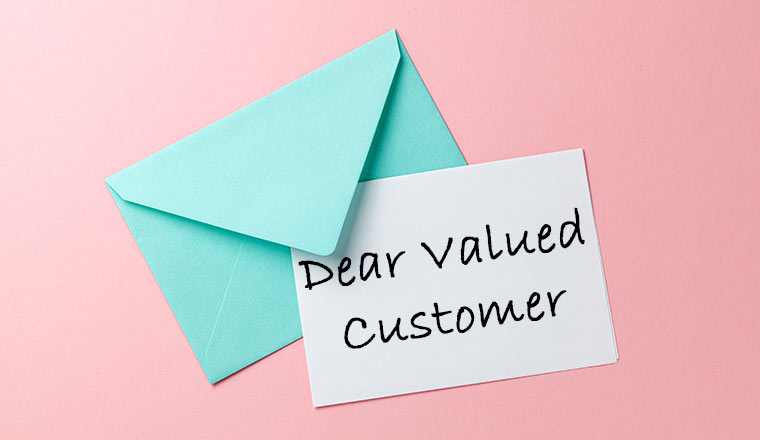24th May 2022

The greeting “Dear Customer” is widely used in customer service, but does it really make customers feel valued? In reality, this generic phrase can come across as impersonal and disconnected.
A more thoughtful, personalised approach can strengthen customer relationships, build trust, and create a better overall experience. So, what should you say instead? Let’s explore the best alternatives to “Dear Valued Customer” and why they make a difference.
Dear Customer is typically used in business communications. Many businesses prefer using it to the Dear Sir/Madam that can sound a little formal.
Here are some of the variants (or synonyms) that we have seen in use:
So, Which One Should You Use? None of Them!
Why? Although it might be tempting to update the phrase “Dear Valued Customer” with alternative words for valued, and there are lots of synonyms for valued – including appreciated, loved and, respected – it’s far better to take a different approach, as our readers explain below.
If you are writing to a customer (for example in a letter or an email), you should already know the customer’s name. Simply use this.
Use the customer’s name
“Dear Jonty Pearce” shows you care better than “Dear Valued Customer”
“Just use their name. If they’re a customer, the content should show that they’re valued, for example by being relevant and meaningful to them and their business,” says Mimosa Griffiths, Former customer success manager at Vonage.
But be very careful if you are using a mail merge.
There is nothing worse than seeing one of the following examples that have passed my desk.
The key here is to double-check all communication before it leaves the building and if you are using an automated system to have a suitable fallback system if there is no name.
“Often there are scenarios when you will not know the customer’s name, particularly if this is a prospective customer not an existing one. E.g. if a potential ‘customer’ is getting in touch to ask about a new order’ you will not know their name at that stage,” says Alex Mead.
In this case, Good Morning or Good Afternoon can be used.
“If you don’t know the name, then Good Morning/ Good Afternoon from [Contact Centre Team Name]/[Business Name] if it is in writing. If it is a call-in, then it’s easier as the agent can chat to them, build the rapport and collect the info,” says Mimosa Griffiths at Vonage.
We just had that very debate last week. We decided that it’s not a sensible approach as too often customers may be getting in touch because they do not feel ‘valued’, whether that be fair or not.
So, if a customer (or prospect) calls us, then we will never say ‘Dear Valued Customer’ or even ‘Dear Customer’. And if a customer has written to us, then we know who they are and will reply with their name.
Contributed by: Alex Mead
Last week I waited for 45 mins on an international call to speak with a major Scottish Bank, not feeling that my call was important at all. The more they told me how important it was, the less important it felt.
Contributed by: Tom, one of our readers
Should we call customers by name? Should we call our customers Sir, or Madam? Should it be Mr or Mrs? Or should we be on first-name terms?
If you want more insights to weather you should call customers by name, read our article: Should We Call Customers by Name?
Do you want to speak in the same language as the customer? Use filtering!
Contact centre advisors are often in situations where they just don’t feel that the customer is on the same wavelength as them.
Perhaps the advisor has done their best to build rapport with the customer, but their efforts just don’t seem to be appreciated.
The key here is filtering, which highly skilled advisors can use to build rapport.
Here are several ways to say “we value you as a customer”:
What makes the best customer service greeting phrases for your contact centre scripts?
We surveyed over 80 of our readers to find out which examples of opening spiel work best. To find out the results, read our article: The Best Customer Service Greeting Phrases – with Examples
For more practical advice on customer service correspondence and greetings, read these articles next:
Reviewed by: Robyn Coppell